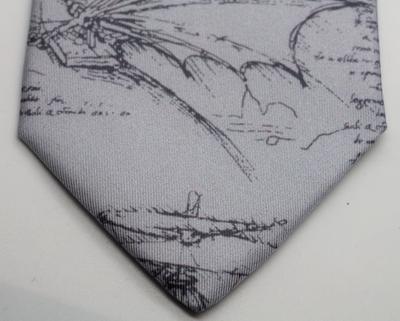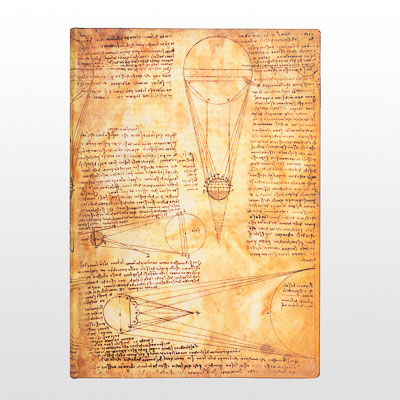Tel : (+33) 4 94 63 18 08
9am - 6pm from Monday to Sunday
All products Léonard De Vinci • Products of the topic Renaissance
Figurine Leonardo da Vinci: The Vitruvian Man
REF : LDV-FIG-01
In stock
Only 1 in stock
Unavailable
89,00 €
(98.49 USD)
Leonardo da Vinci Statue: "Vitruvian Man (1492)"
Created from the pen, ink, and wash drawing on paper measuring 34 x 26 cm, dating back to 1492
This high-quality art reproduction is a unique collector's item from our "Renaissance" collection.
It comes with its Parastone manufacturing certificate.
Material: Stone and marble powder with resin, metal.
⌀: 22 cm
Weight: 250 g
Renaissance
The Renaissance in painting is an artistic movement that developed in Italy at the beginning of the 15th century and spread throughout Europe in the following centuries. It is characterized by a return to the values of classical antiquity and by the rediscovery of the art of perspective, anatomy and proportion. Among the most famous artists of the Renaissance, we can mention Leonardo da Vinci, Michelangelo and Raphael. Leonardo da Vinci, born in 1452, is known for his paintings such as The Last Supper and The Mona Lisa, as well as for his numerous sketches and drawings of machines and inventions. Michelangelo, born in 1475, is mostly known for his frescoes in the Sistine Chapel and for his sculpture of the Pietà. Raphael, born in 1483, is famous for his oil paintings such as La Madonna della Seggiola and The Transfiguration. The Renaissance was influenced by many factors, including the rediscovery of numerous texts from antiquity thanks to the travels of Marco Polo and the Crusades, as well as the invention of printing which allowed the dissemination of these texts. It was also influenced by new humanistic ideas that emphasized the importance of man and his place in the world. In painting, the Renaissance saw the emergence of new techniques such as the use of oil paint, which allowed artists to create more detailed and durable works. It also saw the use of perspective, which gave the impression of depth to the image, as well as the use of anatomy and proportion to represent the body in a more realistic way.
Discover the artist
De Vinci Léonard
Leonardo Da Vinci, Leonardo Da Vinci in Italian, was a painter, an inventor and a humanist philosopher.
Universal genius, symbol of the Renaissance and its creative and revolutionary quintessence, Leonardo is much more than an artist. His scientific research and the multitude of inventions present in his invaluable notebooks are an incredible legacy offered to future generations. In comparison, the small number of works that have come down to us is quite derisory (he was reluctant to finish what he was starting), but their recognition, their impact, are exceptional. It is enough to quote the Mona Lisa, the Last Supper or the Vitruvian Man to understand what trace this Italian artist has left in our souls...
De Vinci Léonard
Leonardo Da Vinci, Leonardo Da Vinci in Italian, was a painter, an inventor and a humanist philosopher.
Universal genius, symbol of the Renaissance and its creative and revolutionary quintessence, Leonardo is much more than an artist. His scientific research and the multitude of inventions present in his invaluable notebooks are an incredible legacy offered to future generations. In comparison, the small number of works that have come down to us is quite derisory (he was reluctant to finish what he was starting), but their recognition, their impact, are exceptional. It is enough to quote the Mona Lisa, the Last Supper or the Vitruvian Man to understand what trace this Italian artist has left in our souls...
De Vinci Léonard
Leonardo Da Vinci, Leonardo Da Vinci in Italian, was a painter, an inventor and a humanist philosopher.
Universal genius, symbol of the Renaissance and its creative and revolutionary quintessence, Leonardo is much more than an artist. His scientific research and the multitude of inventions present in his invaluable notebooks are an incredible legacy offered to future generations. In comparison, the small number of works that have come down to us is quite derisory (he was reluctant to finish what he was starting), but their recognition, their impact, are exceptional. It is enough to quote the Mona Lisa, the Last Supper or the Vitruvian Man to understand what trace this Italian artist has left in our souls...
De Vinci Léonard
Leonardo Da Vinci, Leonardo Da Vinci in Italian, was a painter, an inventor and a humanist philosopher.
Universal genius, symbol of the Renaissance and its creative and revolutionary quintessence, Leonardo is much more than an artist. His scientific research and the multitude of inventions present in his invaluable notebooks are an incredible legacy offered to future generations. In comparison, the small number of works that have come down to us is quite derisory (he was reluctant to finish what he was starting), but their recognition, their impact, are exceptional. It is enough to quote the Mona Lisa, the Last Supper or the Vitruvian Man to understand what trace this Italian artist has left in our souls...
De Vinci Léonard
Leonardo Da Vinci, Leonardo Da Vinci in Italian, was a painter, an inventor and a humanist philosopher.
Universal genius, symbol of the Renaissance and its creative and revolutionary quintessence, Leonardo is much more than an artist. His scientific research and the multitude of inventions present in his invaluable notebooks are an incredible legacy offered to future generations. In comparison, the small number of works that have come down to us is quite derisory (he was reluctant to finish what he was starting), but their recognition, their impact, are exceptional. It is enough to quote the Mona Lisa, the Last Supper or the Vitruvian Man to understand what trace this Italian artist has left in our souls...













































































































